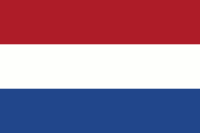De essentie
Hoewel nog steeds bediscussieerd, wordt aantasting van de longen door Pasteurella multocida meestal als secundair beschouwd na virale aandoeningen, na Mycoplasma hyopneumoniae letsels of andere longbeschadigingen (wormletsels, ammoniakconcentratie, ...).
Managementaanpassingen kunnen noodzakelijk zijn om het infectierisico met primaire longpathogenen te beperken.
Keuze van het antibioticum
Door de sterk purulente ontsteking die door P. multocida geïnduceerd wordt, is behandeling met antibacteriële middelen noodzakelijk om blijvende longschade en ernstige productieverliezen te voorkomen.
1ste keuze
florfenicol procaïne benzylpenicilline trimethoprim + sulfonamiden2de keuze
amoxicilline ampicilline doxycycline gamithromycine gentamicine oxytetracycline procaïne benzylpenicilline + neomycine tildipirosine tilmicosine tulathromycine3de keuze
lincomycine + spectinomycine tylosine cefquinome ceftiofur danofloxacine enrofloxacine flumequine marbofloxacine+ Resistentie
Gebruik van aminopenicillines en cefalosporines kan selectie van ‘Extended spectrum beta-lactamase’ (ESBL) / AmpC - producerende organismen bevorderen. Deze molecules werden daarom als respectievelijk tweede en derde keuze gerangschikt.
Tegen tetracyclines werd verhoogde resistentie vastgesteld. De resistentiepercentages tegen doxycycline zijn lager dan tegen de andere molecules van de tetracycline-groep.
Gentamicine en neomycine zijn nefro- en ototoxisch. Aminosiden vertonen een minder goede orale opname.
Tylosine en de combinatie lincomycine + spectinomycine werden als derde keuze gerangschikt omwille van de hogere aantallen resistente stammen.
Tiamuline werd niet behouden voor classificatie, omdat men deze molecule wil voorbehouden voor behandeling van dysenterie.
+ Staalname en diagnostiek
Plaats staalname:
Veelal worden bacteriële agentia (behalve M. hyopneumoniae, Bordetella bronchiseptica en Actinobacillus pleuropneumoniae) in het ziekteproces beschouwd als een secundair agens bovenop een primaire pathogeen en /of managements- of omgevingsfactoren. De kiemen kunnen voorkomen in de bovenste luchtwegen van gezonde varkens.
Voor diagnose bij levende dieren is isolatie van de kiem of het uitvoeren van een PCR noodzakelijk. Hiervoor kan longspoelvocht verzameld worden door een broncho-alveolaire lavage (BAL) of een transtracheale lavage, of kan een tracheobronchiale swab (TBS) genomen worden. BAL fluid is minder geschikt voor het aantonen van A. pleuropneumoniae.
Bij gestorven dieren kan de kiem geïsoleerd worden uit de longletsels. Longweefsel wordt verzameld ter hoogte van de letsels of materiaal wordt verzameld door een swab in de longletsels te draaien.
Hoe bewaren:
Stalen voor kiemisolatie moeten zo snel mogelijk aan het laboratorium worden bezorgd.
Longweefsel kan eventueel wel tijdelijk ingevroren (-20°C) worden, maar Pasteurellaceae gaan bij invriezen sterk achteruit in aantal.
+ Referenties
Abatih et al. Impact of antimicrobial usage on the transmission dynamics of antimicrobial resistant bacteria among pigs. Journal of Theoretical Biology 2009, 256: 561-573.
Alban et al. A human health risk assessment for macrolide-resistant Campylobacter associated with the use of macrolides in Danish pig production. Preventive Veterinary Medicine 2008, 83: 115-129.
Alban et al. Possible impact of the "yellow card" antimicrobial scheme on meat inspection lesions in Danish finisher pigs. Preventive Veterinary Medicine 2012, in press, http://dx.doi.org/10.1016/j.prevetmed.2012.11.010.
Davies et al, Characterization and comparison of Pasteurella multocida strains associated with porcine pneumonia and atrophic rhinitis. Journal of Medical Microbiology (2003), 52, 59–67.
Kaspar et al. Quantitative resistance level (MIC) of Pasteurella multocida isolated from pigs between 2004 and 2006: National Resistance Monitoring by the BVL. Berliner und Münchener Tierärztliche Wochenschrift 2007, 120: 442-451.
Lizarazo et al. Evaluation of changes in antimicrobial susceptibility patterns of Pasteurella multocida subsp. multocida isolates from pigs in Spain in 1987–1988 and 2003–2004. American Journal of Veterinary Research 2006, 67: 663-668.
Smith et al. Stretching the mutant prevention concentration (MPC) beyond its limits. Journal of Antimicrobial Chemotherapy 2003, 51:1323-1325.
A2-bronnende Jong et al. VetPath Study Group, Centre Européen d’Etudes pour la Santé Animale (CEESA), Brussels, Belgium. Antimicrobial susceptibility monitoring of respiratory tract pathogens isolated from diseased cattle and pigs across Europe. 22nd European Congress of Clinical Microbiology and Infectious Diseases (ECCMID) 2012.
Klein et al. VetPath Study Group, Centre Européen d’Etudes pour la Santé Animale (CEESA), Brussels, Belgium. Antimicrobial susceptibility monitoring of respiratory and enteric tract pathogens isolated from diseased swine across Europe between 2004 and 2006. 4th European Symposium of Porcine Health Management (ESPHM) 2012.
Gegevens antibiogrammen DGZ 2009-2011.
A3-bronnenEMA CVMP Scientific Advisory Group on Antimicrobials (SAGAM). Reflection paper on the use of macrolides, lincosamides and streptogramins (MLS) in food-producing animals in the European Union: development of resistance and impact on human and animal health. European Medicines Agency 2011.
EMA CVMP Scientific Advisory Group on Antimicrobials (SAGAM). Reflection paper on use of pleuromutilins in food-producing animals in the European Union: development of resistance and impact on human and animal health (Draft for consultation). European Medicines Agency 2012.
Werkgroep Veterinair Antibioticum Beleid. Koninklijke Nederlandse Maatschappij voor Diergeneeskunde. Formularium varken. Juli 2012. Accessed at http://wvab.knmvd.nl/wvab/formularia/formularia.









